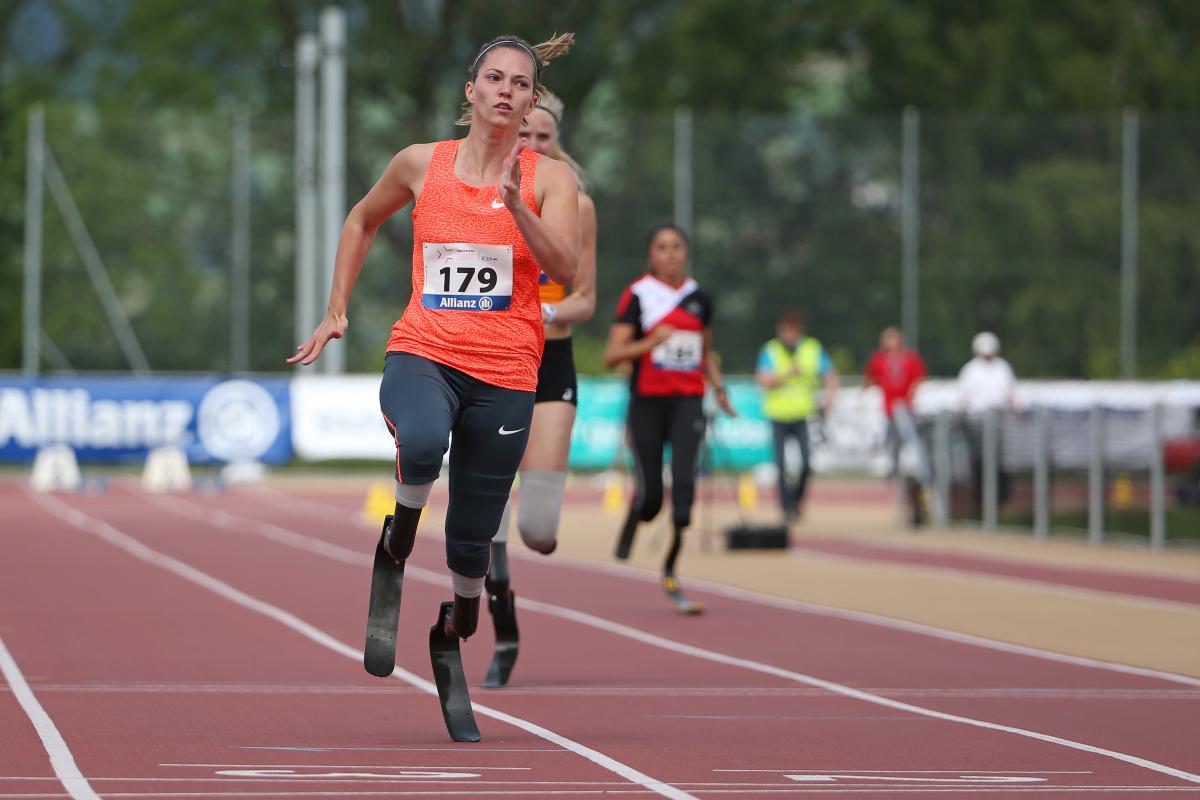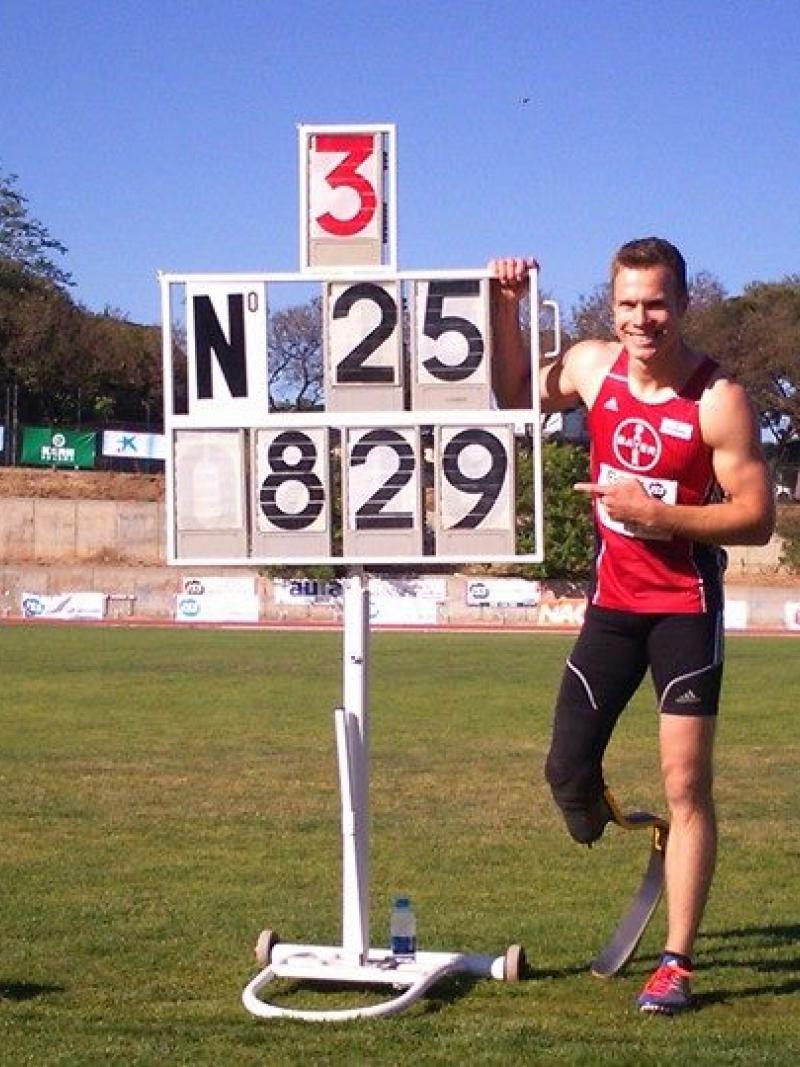Para athletics explained – Blade running
The world’s fastest female blade runner, the Netherlands’ Marlou van Rhijn explains what it is like to running on blades. 12 May 2016
Marlou van Rhijn on her way to breaking her own 100m T43 world record on 30 May 2015 in Nottwil, Switzerland
In the fourth edition of our ‘Para athletics explained’ series, Dutch star sprinter Marlou van Rhijn talks about blade running.
Van Rhijn, a double leg amputee, began racing on blades in 2011 before going on to clinch multiple Paralympic, world and European titles.
The 24-year-old currently holds the world record in the 100m, 200m and 400m T43 and will be going for glory once again at the Rio 2016 Paralympic Games. She will also be competing at the IPC Athletics Grand Prix in Nottwil, Switzerland, at the end of May.
What was it like when you first put on your blades?
I was training for six months on my normal prosthetics and by that time I was strong enough and had had enough practise to try out blades. First they wanted me to have a stronger core.
It was really cool because I had never experienced something like it. I was used to running on wooden feet, because I had the oldest prostheses you could imagine - that was what I learned to walk on, so I had never changed that.
I remember I wasn’t allowed to walk, they had me running straight away, because blades are made for running. That was really cool and really fast – or at least I felt really fast.
What exercises do you do to be ready to run on blades?
The basics really – it’s not that hard, you need to make sure your back and your butt are strong enough to absorb the bounce. When you start off you have softer blades, so the bounce is bigger and you are nearer to the ground. But you need to be able to absorb that bounce and so the basic core exercises – sit ups and planking - are important.
How quickly did you get used to blades?
I actually got used to them really quickly. Because I was running straight away, you just had to get used to it. I know that people thought I was going to fall, but I didn’t. I think I started falling when I was making progress.
How did you adjust to block starts?
Sitting in the blocks was okay, the thing is getting out of your blocks. I was really scared of jumping out of them because it was a really strange position that I had never been in before. To go from that position to running was really scary.
The first thing I did was sit in the blocks then come out and jump on a mattress, so I was learning how to fall out of the blocks, which is the first step to starts. There is a difference between coming out of the blocks – going from one position in to another – and starting, which is more about pressure and speed.
How long did it take for you to perfect your starts?
Actually it took me a while, and I still think it’s not perfect, but once you get over that fear you can get in to normal starts. I think I really only learned how to start last year. I switched coaches and my new coach is big on starts – that’s his thing. The fine tuning of the start therefore just happened a year ago.
The transition from starting to getting up and running is for me the hardest thing about running – having enough pressure and getting in to the running is a really interesting process that I am still working on.
How do you adapt to running against single leg amputees who are out of the blocks much more quickly?
I actually like it, because if I was in front of the rest immediately, I would do the race all by myself. Now there is a part of the race where I can race other people. Then hopefully I will push through and they will be behind. It’s nice to have a part of the race when you are racing and chasing.
What can you do to prevent injuries?
I’m still really working on my core because if you don’t, and if you have any sort of weakness in your back, injuries can happen really quickly.
Every time you run there is a squeeze – your head goes down and your legs go up, and that can be terrible for your legs. It happens every step you take, so you can prevent that by having a stronger core so you can stay straight.
Is it hard running in rain?
It shouldn’t be hard because there are spikes underneath the blades, but it’s always a bit scary. I don’t have any feeling in the lower part of my legs so if something happens – if I slip – I know when I am on the ground, but not before. But it shouldn’t be tricky.
How do you look after your blades?
I don’t really have a maintenance routine – I do check my spikes and make sure they are sharp. I notice when I need to get new blades because my timing is off, and they are not stiff enough anymore.
__
Sport fans from around the world can now buy their Paralympic tickets for Rio 2016 from authorised ticket resellers (ATRs).
The IPC’s Global ATR is Jet Set Sports, and Rio 2016 tickets and packages can be purchased on the CoSport website.

 Facebook
Facebook
 Instagram
Instagram
 Twitter
Twitter
 Youtube
Youtube



